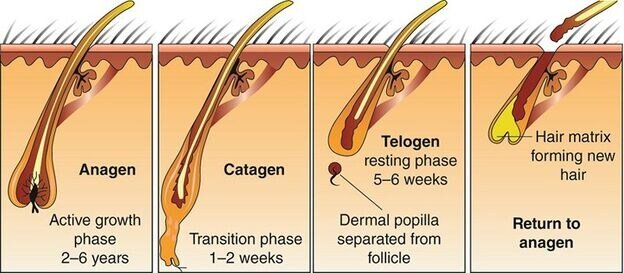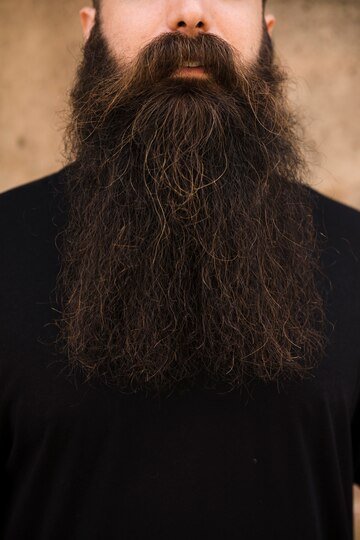Growing a beard naturally involves more than just stopping shaving. To get over the first awkward stages, one needs patience, care, and self-assurance. Everyone’s beard-growing journey is unique due to differences in genetics and hair types. While some may aim for a full, thick beard, others might prefer a simple stubble.
Maintaining a good beard care routine is essential for achieving a healthy and appealing look. Regular washing and conditioning help keep your beard clean and free from dirt, while the right products can promote a longer-lasting, better-looking beard. This routine can also be a relaxing way to unwind after a busy day.
In this guide, I’ll talk about methods to enhance beard growth, what you can expect during this journey, and when it might be necessary to seek professional advice for beard growth issues. Whether you’re aiming for a full beard or just some stylish stubble, these tips can help you grow the beard that’s right for you.
Topics Covered
Toggle
Set Your Personal Beard Growth Principles
Before you think about of growing your beard naturally, you should set some personal principles with yourself. This can also be called setting your mindset. You may think these principles are not that much important but trust me, without these, you cannot be successful in your beard journey.
Commit to the Journey
Growing a beard requires more than just putting down your razor. It demands patience and determination. The initial stages can be particularly challenging due to itchiness and the discomfort of new hairs poking through the skin. During these early weeks, you might feel tempted to scratch, rub, or even shave off the new growth. However, it’s crucial to stay committed and resist these urges. Remind yourself of your goal and push through the difficult moments. Embracing the journey and being patient will ultimately lead to the impressive beard you desire.
Set Realistic Expectations
Understanding your beard’s growth pattern is essential. Pay attention to how and where your facial hair grows during the first few weeks. It’s normal to experience some messiness and patchiness in the beginning. Don’t be discouraged by these initial stages; they are part of the process. It takes a lot of trial and error to figure out what works best for you when growing a beard. For the first 4-6 weeks, avoid cutting or shaping your beard to enable your facial hair to properly develop. This will make it easier to define your beard’s natural shape later on.
Define Your Beard Lines and Establish Goals
Before starting your beard journey, it’s important to educate yourself on which beard styles will suit your face shape and growth patterns. Consider how your facial hair fills in and where it grows most densely. For example, if your chin and mustache are thick but your cheeks are scarce, a goatee may be an excellent choice for you. Choose a beard style that complements your facial features and reflects your personality. Setting clear goals and having a vision for your beard will help guide you through the growing process and keep you motivated.
Avoid Comparing Your Beard to Others
One of the biggest pitfalls in growing a beard is comparing your progress to others. The growth pattern and pace of each individual’s beard are distinct and can differ greatly. While it’s natural to seek inspiration from bearded icons, remember that your beard is yours alone. Focus on your beard’s abilities rather than its limitations and embrace its individuality. Remember that everyone experiences uncomfortable and patchy phases, so don’t give up if your beard doesn’t look flawless straight away. Celebrate your own progress and find styles that highlight your best features.
Guidelines for Growing Beard Naturally
Growing a beard naturally involves adopting certain practices that can support healthy and robust beard growth. Here are some key guidelines to help you achieve a fuller and healthier beard. By regularly adhering to these recommendations, you can naturally grow a fuller, healthier beard. Everyone’s beard growth journey is unique, so be patient and experiment with these practices to find what works best for you.
Let Your Beard Grow
Patience is crucial when growing a beard naturally. A common error made by newcomers is to give up too soon. It takes time for all hairs to grow at the same rate and length. Resist the temptation to trim or shape your beard during the initial 4-6 weeks. Allowing your beard to grow freely helps it fill out evenly and allows you to understand its natural growth pattern better.
Use Beard Products Early
Early use of beard products is essential to maintaining the health of your facial hair. Clean and moisturized skin provides a better environment for hair growth. Wash your face with a gentle, natural soap and moisturize with oils like castor or coconut oil after bathing. Also micro-needling or derma roller can help in stimulating your beard. These products help prevent dryness and irritation, promoting healthier beard growth.
Include Diet for Beard Growth
A well-balanced diet plays a crucial role in promoting healthy beard growth from within. Focus on incorporating foods rich in protein, omega-3 fatty acids, and vitamins such as A, B-complex, C, D, E, and K. These nutrients support hair follicle health, stimulate beard growth, and prevent hair breakage. Include sources like lean meats, fish, nuts, fruits, and vegetables to nourish your beard from the inside out.
Stay Active with Regular Exercise
Regular Exercise, including strength training and high-intensity interval training (HIIT), can benefit beard growth by boosting testosterone levels. Testosterone plays a key role in stimulating hair follicles and promoting healthy hair growth. Exercise also improves blood circulation, delivering essential nutrients and oxygen to the hair follicles, which contributes to stronger and healthier beard growth.
Get Good Sleep
Quality sleep is essential for overall health and beard growth. During sleep, your body produces testosterone and other hormones crucial for beard growth. Aim for 7-8 hours of uninterrupted sleep each night to support optimal beard health. Poor sleep quality can disrupt hormone levels and negatively impact beard growth, so prioritize a regular sleep schedule.
Keep Your Beard Clean and Moisturized
Maintaining clean and moisturized facial skin is vital for healthy beard growth. Use beard-specific shampoos and conditioners to keep your beard clean and soft. Moisturize your beard with beard oils or balms to prevent dryness, itchiness, and split ends. These products also help maintain the natural oils in your beard and skin, promoting overall beard health and appearance.
Quit Smoking, Alcohol to Help Your Beard Grow
Smoking and excessive alcohol consumption can hinder beard growth by reducing blood flow to the hair follicles and disrupting hormone levels. Quitting smoking and moderating alcohol intake can improve the health and growth of your beard. Reduced inflammation and improved circulation will contribute to stronger and healthier beard growth over time.
Stress Management
Effective stress management is essential for promoting optimal beard growth. Chronic stress can disrupt hormone levels, including testosterone, which is crucial for beard growth. Engage in stress-relieving activities like deep breathing exercises, meditation, or partaking in your favorite pastime. Maintaining a healthy work-life balance and prioritizing self-care can also help manage stress levels and support healthy beard growth.
Factors Affect Beard Growth
There are some factors on which your natural beard growth depends. The following are the common factors you should know:
Genetics
How your beard will be mostly depending on your genes. The thickness of your beard depends on your genetics. If your father or grandfather had a thick beard, you may also have the same, and if they had any problems with their beard, you may also encounter similar issues.
Age
Beard growth typically begins for people at the age of 20 on average. Some people may experience it earlier, while others may experience it later. It varies from individual to individual. So if you don’t see it at 20, there’s no need to be concerned. Just be patient.
Testosterone Levels
Natural beard growth depends on your testosterone level. If your testosterone is low, it indicates that you will experience slower beard growth.
Phases of Beard Growth
Understanding the phases of beard growth can help you manage your expectations and care for your beard more effectively. Like all hair, beard hair goes through a cycle of growth, rest, and renewal. Here are the key phases:
Anagen Phase (Active Growth Phase)
The anagen phase is when your beard hair grows the most rapidly. Hair typically grows about half an inch per month and can continue to grow for 3 to 4 years. This phase is when you’ll see the most significant increase in beard length.
Catagen Phase (Transition Phase)
The catagen phase lasts for two to three weeks and is a brief period of transition. During this phase, the hair follicle shrinks and detaches from the blood supply, which cuts off nutrients to the hair. Although the hair stops growing, it remains in place.
Telogen Phase (Resting Phase)
In the telogen phase, the hair follicle remains dormant for a few months. After this resting period, the follicle pushes out the old hair, and new hair begins to grow in its place. This is a typical phase of the hair growth cycle—the shedding process.
Terminal Length (Return to Anagen)
The terminal length phase is when the hair reaches the end of its growth cycle. The hair stops growing longer and will eventually be replaced by new growth as it returns to the anagen phase. Beard hairs do not all reach the same terminal length, leading to varied growth patterns on different parts of your face. For example, mustache hairs usually do not grow as long as those on your chin or cheeks.
By understanding these phases, you can better appreciate the natural growth process of your beard and adopt appropriate care routines to support healthy beard development.

Should You Shave to Accelerate Your Beard?
There is a common myth that shaving every day can make your beard grow faster or thicker. However, this belief has no scientific basis. Shaving does not influence the rate at which your beard grows or its thickness.
When you shave, you cut off the thinner, lighter ends of the hairs, exposing the thicker, darker base near the skin. This can create the illusion that your beard is growing back thicker and fuller, but in reality, the growth rate and density of your beard remain unchanged. The blunt tips from shaving may appear coarser, but they do not affect the hair’s actual growth.
To truly promote healthy beard growth, focus on proper care and maintenance, such as a balanced diet, regular exercise, and using appropriate beard products. Shaving will not speed up your beard growth, so it’s better to let your beard grow naturally and support it with good grooming practices.



